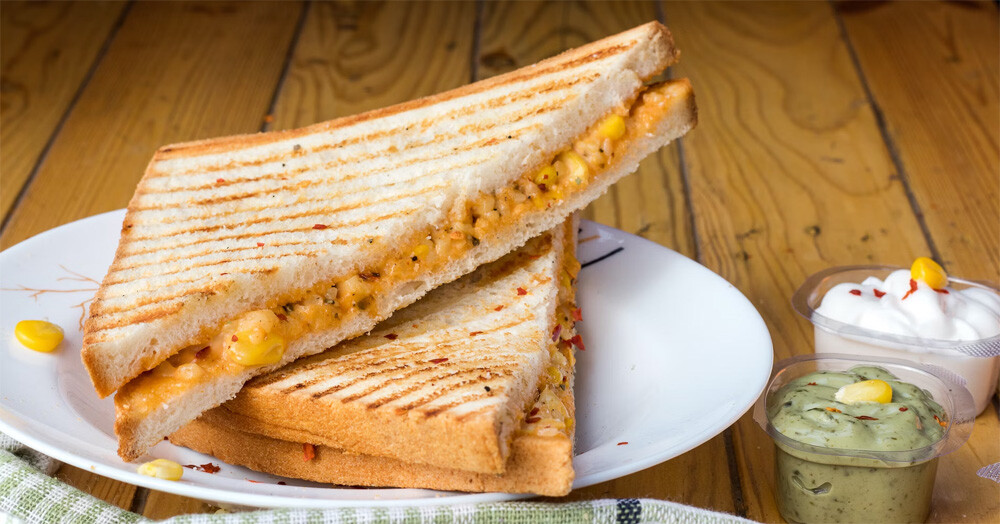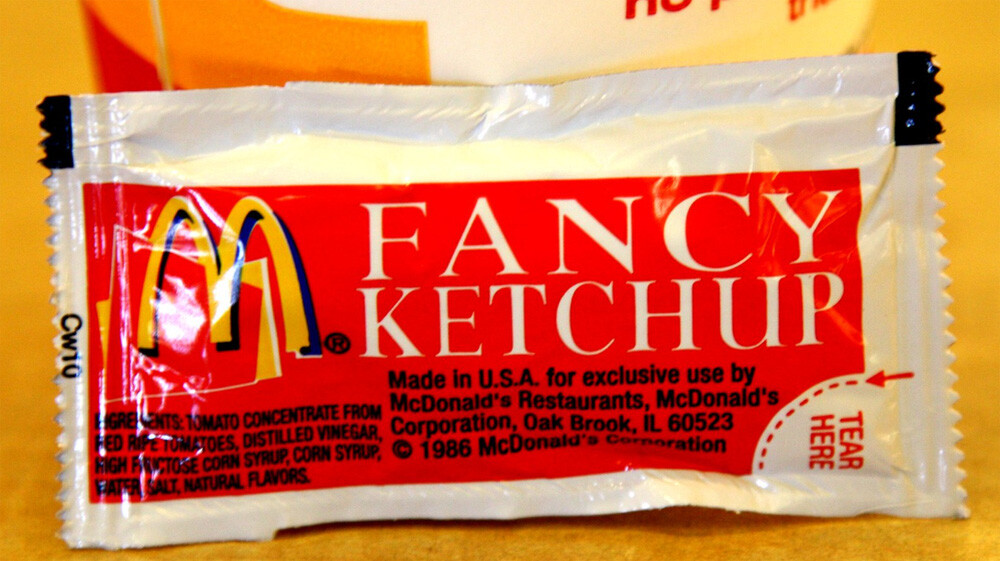5 Very Serious Laws Governing Very Silly Foods

In the summer of 2016, the internet debated a very serious question: Is a hotdog a sandwich? In light of everything that happened in the period that followed, some may wonder in hindsight if that was the most important issue for us to concern ourselves with. Some would say that it absolutely was.
Those people would be the fine folks at the United States Department of Agriculture. These are scribes concerned with nailing down the meanings of the words we use for food. Those amateurs at Webster and Oxford merely describe what words mean — the USDA goes further, setting meanings, which all of us who label food are obligated to adhere to. And so long as we remain in the shadow of their tower, we know for certain such matters as...
Is a Grilled Cheese a Sandwich?

Let’s start with the big question, of what truly defines a sandwich. There are two kinds of sandwiches, says the USDA — open-face sandwiches and closed-face sandwiches. An open-face sandwich places toppings on a single slice of bread, and they aren’t what most of us would call sandwiches at all. The fillings aren’t sandwiched between anything. The more common kind of sandwich is closed-face, and the USDA says a closed-face sandwich is “a meat or poultry filling between two slices of bread, a bun or a biscuit.”
This extraordinary claim would mean no vegetarian sandwiches exist. A classic grilled cheese? Not a sandwich. Peanut butter and jelly? Also not a sandwich. A cucumber sandwich? Believe it or not, also not a sandwich. Or, you can ignore this and call food whatever you want, but if you follow the conceit that the rules matter, you better watch what you put in your sandwich. Also, the cooked meat must make up 35 percent or more of the sandwich, and the bread must make up 50 percent or less, otherwise it is not a sandwich, and you are a fraud.
Fruit Cocktail Must Not Have Too Many Pears

The government has spent a lot more time thinking about fruit than you have. Pears, for example come in four grades — U.S. No. 1, U.S. Combination, U.S. No. 2 and Unclassified. That’s just summer and fall pears of course; winter pears have the additional classification of U.S. Extra No. 1. Bananas have two sizes: regular and petite. No large bananas, only regular or petite. With tangerines, however, there is no such thing as small. The smallest size is “medium.” Additional sizes include large, jumbo, mammoth, colossal and super colossal.
Then there’s fruit cocktail. You might have assumed fruit cocktail doesn’t mean anything specific, or that it’s an even vaguer term than fruit salad. In fact, a rigid definition controls what’s in fruit cocktail. It must contain cherries, no less than 2 percent but no more than 6 percent. It must contain whole grapes, no less than 6 percent but no more than 20 percent. It must contain diced peaches, diced pears and diced pineapple, and each of these as well have minimum and maximum allowable limits.
The penalty for making a fruit cocktail with a disproportionate amount of pear matter? Death. Well, not the death penalty as administered by the state, but you are guaranteed to die, eventually.
Don’t You Dare Call Miracle Whip Mayo

Miracle Whip first appeared at the 1933 World’s Fair, and its selling point was that it was a cheaper alternative to regular mayonnaise. That’s a difficult idea to understand today. Food doesn’t get a whole lot cheaper than mayonnaise. Sometimes, we buy mayonnaise by the gallon and use it to clean our tires. Back in the 1950s, people used to bulk up all their dishes with mayonnaise because they couldn’t afford to eat all the meat they wanted to. Mayonnaise is itself the cheap alternative.
This forgets, however, just how desperate people were during the Great Depression. Back then, a mixture of eggs and oil was a luxury many could not afford. So, in came Miracle Whip, which also contained eggs and oil but was watered down. Plus, it contained just enough sugar and spice that you don’t notice the watered-down part. Sadly, the dilution means that Miracle Whip does not meet the minimum oil level required to qualify as mayo. You’re still welcome to categorize it as salad dressing, if you’re feeling truly kinky.
The Formal Definition of Raisin Bread

Speaking of foods people ate back when they couldn’t afford meat, let’s talk raisins. Seriously — you might be more likely to consider a raisin to be a poor man’s chocolate chip than a cheap substitute for meat, but a century ago, people advertised raisin bread as “the bread of iron,” due to the iron content. Are raisins rich in iron? Sure, but you don’t hear anyone advertising it as that nowadays because in the age of plenty, not too many people find themselves short on iron.
To legally qualify as raisin bread, a sample must contain a minimum level of raisins, naturally. It must contain at least half as much raisins as flour, by weight. If you add egg to the dough, however, beware. If the dish is more than 2.56 percent egg by weight, it is no longer raisin bread, and you must label it “raisin and egg bread.” Egg matter weighing in at 2.5 percent is okay, even 2.55 percent, but 2.56 percent — that’s when you’ve crossed the line. The exact reasoning behind this figure has been lost to history. It probably has to do with the exact size of a random egg measured by some low-level employee, who went on to be arrested for unrelated matters.
Ooh, Look at that ‘Fancy’ Ketchup

We’re laughing at a lot of these oddly specific definitions, and that’s perhaps because we’re so used to advertising words turning out not to mean anything at all. For example, what does it mean when a food calls itself “healthy”? Not much — there are limits, but they’re so broad that the FDA wants new ones. What does “free-range” mean? That depends on which organization you ask to stick their approval on your eggs; the USDA doesn’t set that. As for that famous marketing term “natural,” that merely means that it was not created with the assistance of ghosts or witches. It has no meaning but that.
And what about “fancy” ketchup? Surely that’s another meaningless term. There’s nothing really fancy about the ketchup McDonald’s places in front of you. However, fancy is an official USDA grade of ketchup. It is equivalent to grade A, while below it lies grade B (“extra standard”) and then lowly grade C (“standard”). If solids make up less than 33 percent of your ketchup, it might be grade B or C, but if it meets the minimum solid requirements, it may quality as fancy. It then needs to be scored for a series of different factors — color, consistency, flavor and finish. If it scores an 85 or more, it is grade A.
Congratulations. McDonald’s isn’t lying to you. That sauce is fancy. Dip with pride.
Follow Ryan Menezes on Twitter for more stuff no one should see.